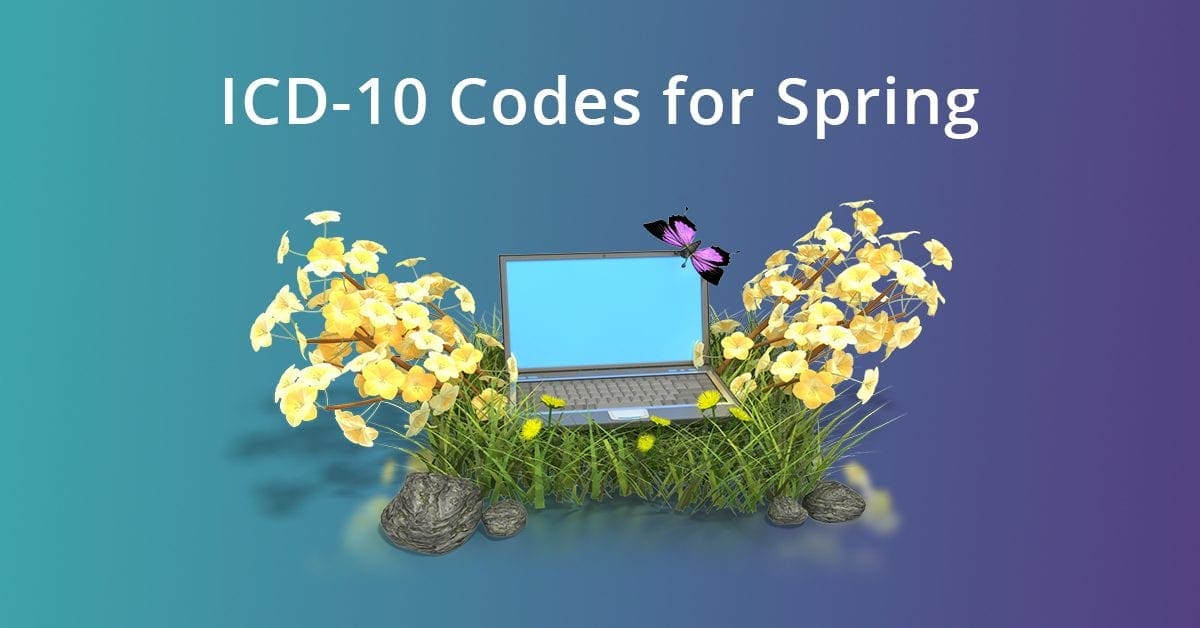Call us toll-free: 800-878-7828 — Monday - Friday — 8AM - 5PM EST


From AdvancedMD
If the long gray days of winter have you hankering for sunny skies and warmer temps, we have good news: The Vernal Equinox is only days away!
This year the Vernal Equinox, also called the “Spring Equinox”, falls on March 20 and marks the official beginning of Spring. The change of seasons has been the cornerstone of festivals and rituals for thousands of years in nearly every corner of the world, and many Vernal Equinox traditions are still alive and well.
To help you prepare for any resulting mishaps, we’ve compiled a list of the ICD-10 codes you will most likely need during the Vernal Equinox celebrations.
MEXICO
- L55.9 Sunburn
- W13.8XXA Fall from, out of or through building or structure
- For over two-thousand years, sun worshipers have gathered at the Pyramid of the Sun in Teotihuacán, Mexico, to celebrate the Vernal Equinox. This ancient Mexican structure is the third largest pyramid in the world – standing an impressive 210 feet. If celebrants stay a little too long at the top–or they take a less-than-graceful way down–they may find L55.9 and W13.8XXA in their electronic health records.
ENGLAND & FRANCE
- H72.00 Central perforation of tympanic membrane, unspecified ear
- T78.05XA Anaphylactic reaction due to tree nuts and seeds
- X03.8XXA Exposure to uncontrolled fire
- F10.9 Alcohol use
- Druids marked the arrival of spring with the Vernal Equinox festival Alban Eilir. This Druidic ritual included loud horn-blowing, hazelnuts, whiskey, and fire. To this day, members of the Ancient Order of Druids meet to participate in these spring celebrations. Any doc treating a Druidic partygoer may want to remember H72.00, T78.05XA, X03, and F10.9.
GERMANY
- 62351 Rabbit fever
- Z91.012 Allergy to eggs
- In some Pagan traditions, the Spring Equinox is celebrated as Eostre, named after the German goddess of spring, or Ostara, after the Anglo-Saxon goddess with similar characteristics. The symbols of these goddesses–eggs and rabbits–have since been attributed to Easter in Western cultures. In fact, the “Easter Rabbit” was said to be Ostara’s most faithful companion who helped her usher in the spring season. If these Pagan celebrations go awry, you may need 62351 and Z91.12.
MARYLAND
- T25.022A Burn of unspecified degree of left foot
- W16.722 Jumping or diving from boat
- Not all Vernal Equinox celebrations have ancient origins. For example, at the Annapolis Maritime Museum yachters burn their socks to signal the start of spring. It’s said the yachters tends to wear deck shoes without socks in the warmer months that follow the Vernal Equinox. Burning their socks is the perfect way to prepare for sunny days on the starboard side. If an overeager yachter doesn’t follow instructions, you may just need T25.022A and W16.722.
GREAT BRITAIN
- Y93.18 Activity, surfing, windsurfing and boogie boarding
- X37.42XA Tidal wave due to storm, initial encounter
- English surfers celebrate the arrival of spring by braving the Severn Bore, a tidal surge that reaches its peak height around the Vernal Equinox. Boarders gather in the Severn Estuary of England to ride the four-foot waves, which are caused by the unique movements of the sun and moon during the equinox period. But when the ultimate wave leads to a trip to the ER, Y93.18 and X37.42XA may come in handy.
OTHER SPRING ICD-10 CODES
- T63.441A Toxic effect of bee sting
- J30.1 Allergic rhinitis due to pollen
- April showers bring May flowers. May flowers bring sting-bearing pollinators and some serious cases of hay fever. You may need T63.441A and J30.1 for patients who have unfortunate reactions to the springtime weather.
- E55.9 Vitamin D deficiency, unspecified
- F32.9 Major depressive disorder, single episode, unspecified
- For many who live in unpredictable climates, spring can be a finicky season. When spring snowstorms dash the hopes of soaking in the sun, E55.9 and F32.9 may be in order.
